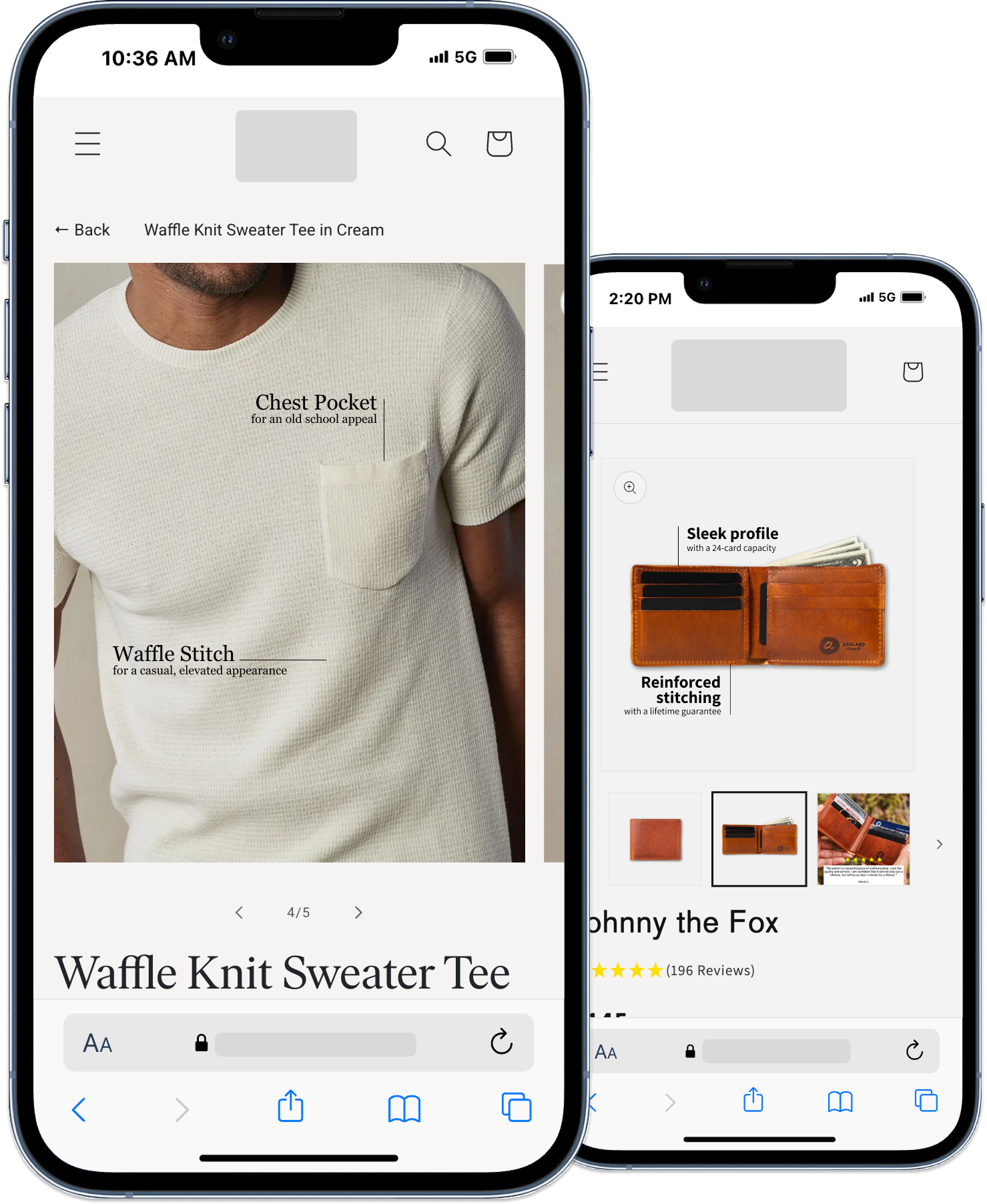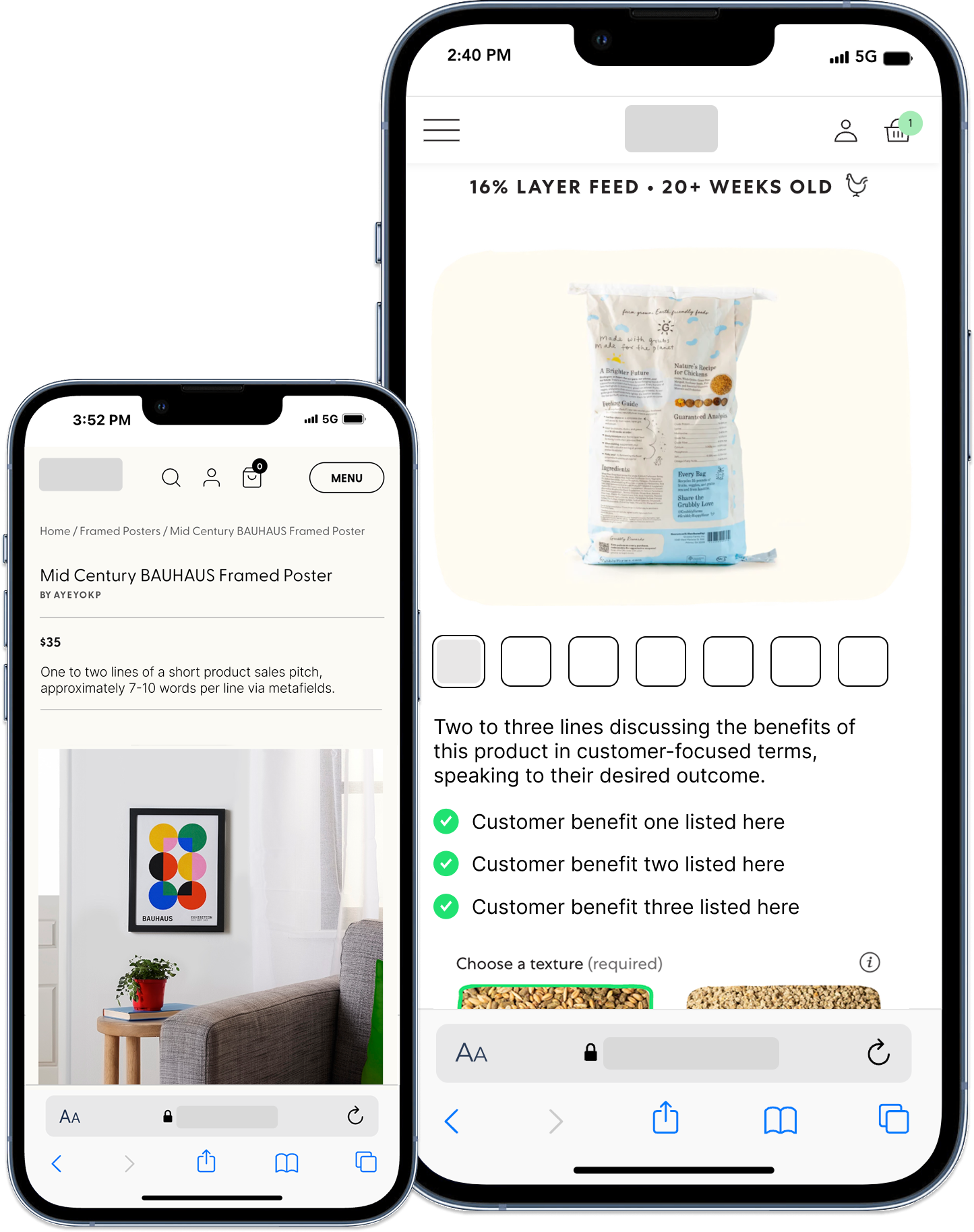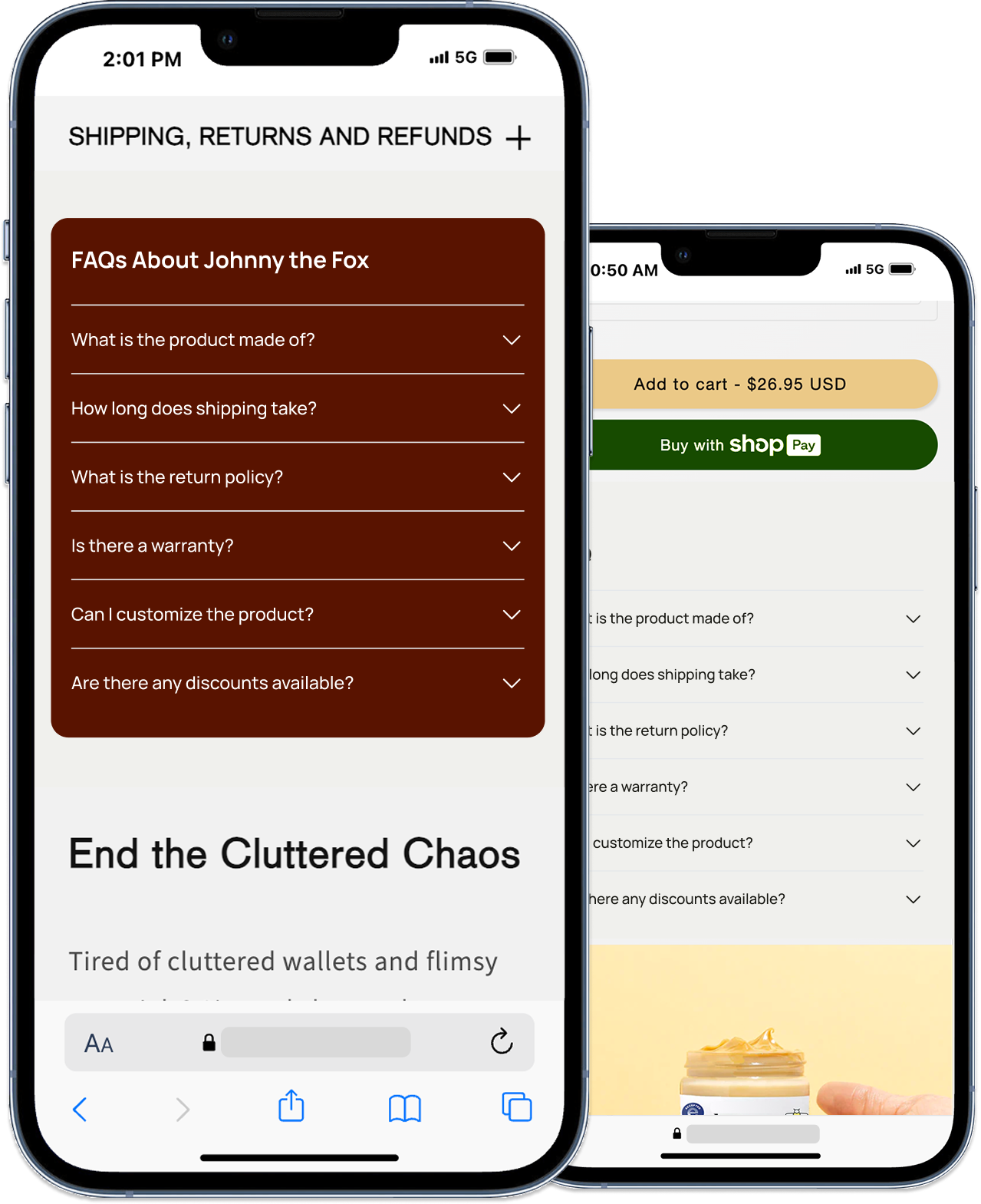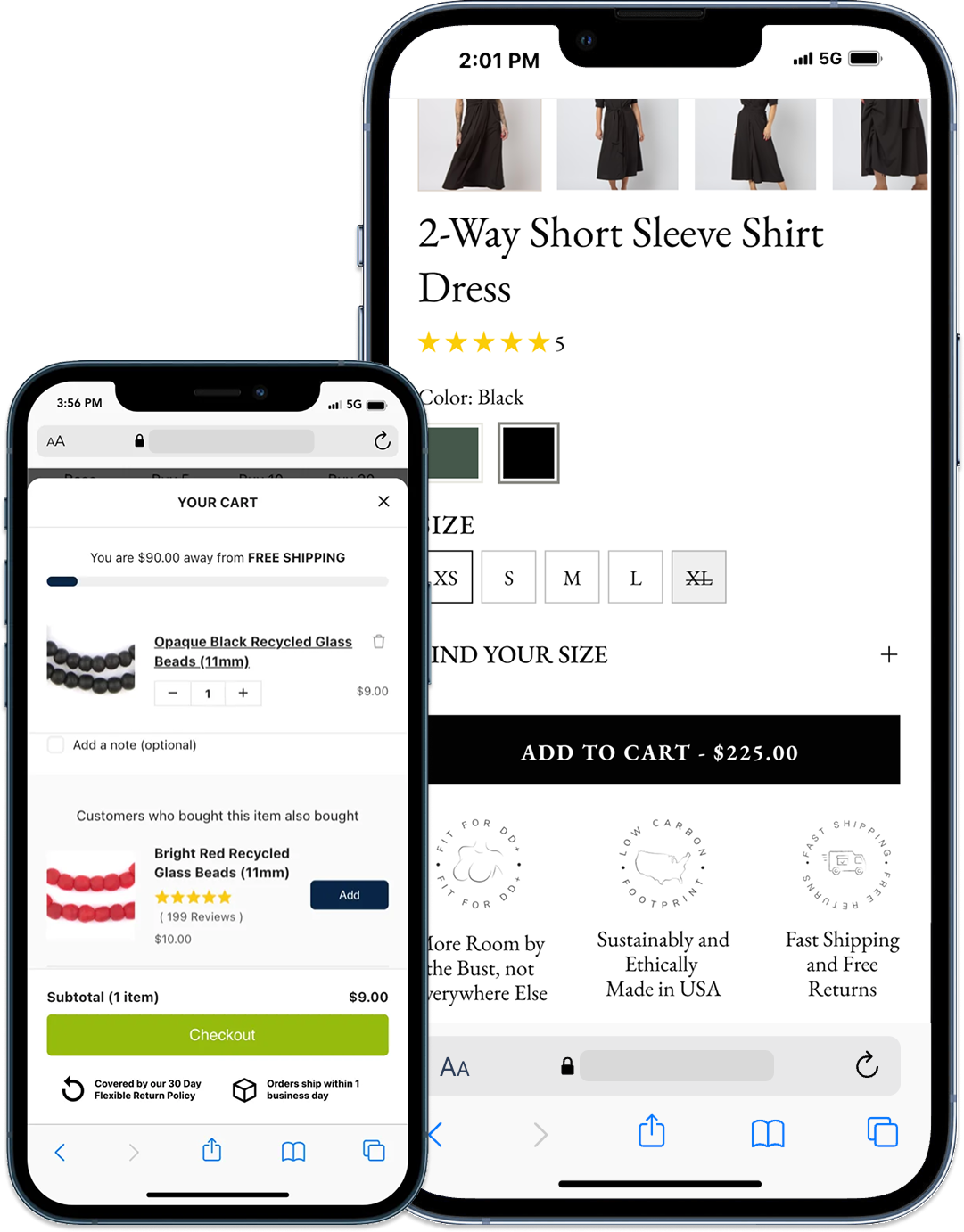Turning Customer Research Into Winning Stores: A Quick Start Guide
Human
Obsessed
CRO
Most ecommerce stores are sitting on goldmines of customer data that never make it past a PowerPoint presentation. Here's how to change that—and boost your revenue by 10-15% in the process.
Every day, your customers are telling you exactly what they need to buy from you. They're sharing it in reviews, support tickets, post-purchase surveys, and even in their browsing behavior. Yet most Shopify stores treat this treasure trove of insights like digital dust collectors—beautiful data that looks great in a slide deck but never actually improves the shopping experience.
The result? You're leaving 10-15% of potential revenue on the table with every single visitor who lands on your store.
As someone who's spent the last three years building conversion rate optimization programs for Shopify stores ranging from $5M to $400M in annual revenue, I've seen this pattern repeat itself across hundreds of brands. The stores that break through aren't the ones with the biggest budgets or the flashiest designs—they're the ones that actually listen to their customers and act on what they hear.
The Problem: Research Without Action
Most brands approach customer research in one of two ways, and both lead to the same dead end.
The Survey Trap
The first approach is the classic "How Did You Hear About Us" (HDYHAU) survey. These might help with attribution tracking, but they do nothing to improve your actual store experience. You learn where customers came from, but not what they need once they arrive.
The Research Project Rabbit Hole
The second approach involves expensive external customer research projects that produce beautiful reports full of insights about customer personas, market positioning, and brand perception. Again, valuable information—but it rarely translates into specific, actionable changes to your website.
When it comes time to actually improve store performance, brands without actionable customer insights end up:
- Guessing at what matters most to their customers
- Blindly copying what competitors are doing
- Immediately reaching for expensive new tools and apps
This reactive approach might occasionally stumble onto improvements, but it's inefficient, costly, and often misses the mark entirely.
The Solution: Playing Offense with Customer Research
What if instead of reacting to performance problems, you could proactively identify and fix conversion barriers before they impact your bottom line?
That's what we call "playing offense" with customer research, and it's built on two fundamental principles:
1. The Intra-Site Funnel Approach
Rather than trying to optimize your entire website at once, you need a clear understanding of which parts of your site are working well (and safe to ignore for now) and which parts urgently need your attention. This focused approach prevents you from wasting time on changes that won't move the needle.
2. The Conversion Block
Once you know where to focus, you need to collect the most relevant customer data points that will actually drive conversion improvements. This isn't about gathering more data—it's about gathering the right data.
Combined, this knowledge allows you to tailor your Shopify store around real customer feedback, leading to higher revenue from every visitor who lands on your site.
The Conversion Block: Four Critical Data Points
For every product or product category in your store, there are four types of customer insights that can dramatically improve your conversion rates:
1. Push
What problem does the customer needs to make better?
E.g., Desired outcome, result, what got them looking
Collection method(s): Post-purchase surveysElements impacted: Image gallery, featured testimonials
2. Pull
What attracts them to the product, brand, solution?
E.g., Biggest selling points &perceived benefits
Collection method(s): Reviews mining, post-purchase surveysElements impacted: Image galleries, elevator pitch, benefits block
3. Anxiety
What makes them nervous about deciding?
E.g., Using the product, brand quality, fulfillment
Collection method(s): Customer support logs, on-site pollsElements impacted: FAQs, Value Propositions, Buy Box Variant Selection
4. Habit
What is the status quo we are battling for a purchase?
E.g., Substitutes, alternative options
Collection method(s): Post-Purchase Surveys, 3rd Party Reviews
Elements impacted: Product Descriptions, FAQS
Where to Apply These Insights
Once you've gathered these four data points for your products, you can weave them throughout your store experience. The applications are nearly limitless:
- Navigation menus that speak your customers' language
- Homepage layouts that address common objections upfront
- Product listing page filters that highlight the features customers care about most
- Product detail pages that proactively answer questions
- Cart and checkout experiences that reinforce purchase confidence
However, if you're just getting started, here are four high-impact areas that consistently deliver results:
Image Galleries: Beyond Pretty Pictures

Years of shopping on Amazon has trained customers to look to image galleries for key product information. Yet most brands treat this space like a brand photoshoot—multiple angles of the same product with little additional context.
Instead, use your image gallery strategically:
- In-scale images that help customers understand size and proportion
- In-use images that show the product in real-world contexts
- Annotated images that connect specific features to the benefits they deliver
Your image gallery should tell a story that moves customers closer to purchase, not just showcase your product from different angles.
Short Descriptions: Less Is More

When it comes to product copy, clear and concise wins every time. It's better to show customers exactly what they need to feel comfortable buying than to tell them everything your brand wants to communicate.
Two to three lines of customer-centric copy, using language taken directly from reviews, surveys, and support tickets, consistently outperforms longer, brand-focused descriptions. This pattern is one of the most reliable A/B test winners we see across different industries and price points.
Product Page FAQs: Proactive Problem-Solving

Here's a sobering statistic: for every customer who contacts your support team with a question, ten others probably had the same concern and simply left your page instead of asking.
Adding a curated FAQ section to your product pages is one of the most effective ways to proactively address these concerns. When you successfully overcome objections that would otherwise cause customers to leave, you'll see:
- Higher conversion rates
- Improved SEO rankings (modern search algorithms reward helpful content)
- Valuable interaction data showing which concerns, when addressed, contribute most to purchase decisions
Value Propositions: Standing Out in Saturated Markets

Most successful ecommerce stores exist in highly competitive markets. The challenge isn't usually convincing customers that your product works—it's convincing them that your brand can deliver better than all the alternatives (including the convenience of Amazon).
Adding clear value propositions under your "Add to Cart" and "Begin Checkout" buttons is a fantastic way to reinforce your brand's unique advantages at the moment of highest purchase intent. This is your last chance to differentiate yourself from easier alternatives.
Real Results: Case Studies
Case Study 1: The Power of Resonant Language
The Challenge: Carnivore Snax needed to improve their homepage messaging to better connect with their target audience.
The Research: Through analysis of first-party customer reviews and post-purchase survey responses, one word emerged as the most frequently mentioned term: "addictive."
The Solution: We incorporated this customer language into the homepage headline, replacing brand-focused messaging with the exact words customers used to describe the product experience.
The Result: +8.14% increase in Average Revenue Per User
This validated that customer language creates highly resonant messaging that can be applied not just on the website, but throughout the entire marketing ecosystem.
Case Study 2: Adding Clarity to Product Details
The Challenge: Deco TV Frames was seeing high traffic to their product pages but low conversion rates, suggesting customers were interested but hesitant to purchase.
The Research: On-site polling and support ticket analysis consistently showed that users couldn't easily find key product details, making them unsure which variant to select.
The Solution: We restructured the product detail page layout to make critical product information more prominent and easier to find.
The Result: +5.54% increase in Average Revenue Per User
Sometimes the biggest conversion barriers aren't about persuasion—they're about clarity. When customers can't find the information they need to make a confident purchase decision, they simply don't buy.
Getting Started: Your Next Steps
Implementing this customer research approach doesn't require expensive tools or lengthy research projects. You can start gathering actionable insights today using the data you already have:
Review Your Existing Touchpoints:
- Customer reviews and ratings
- Support ticket themes and questions
- Post-purchase survey responses
- Live chat transcripts
- Return/refund reasons
Start Small, Think Big:Choose one product or product category and gather the four Conversion Block data points. Then apply those insights to one area of your store experience—perhaps your product page headlines or FAQ section.
Measure and Iterate:Track the impact of your changes and use that data to inform your next optimization. Customer research is most powerful when it becomes an ongoing practice, not a one-time project.
The Compound Effect of Customer-Centric Optimization
When you consistently base your store improvements on real customer insights rather than assumptions, something powerful happens: each optimization builds on the last. You develop a deeper understanding of your customers' needs, your messaging becomes more resonant, and your conversion rates improve across multiple touchpoints.
More importantly, you stop playing defense—constantly reacting to performance problems—and start playing offense, proactively creating experiences that convert more visitors into customers.
The data is already there. Your customers are already telling you what they need. The question is: are you listening, and more importantly, are you acting on what you hear?
Most stores that implement this approach see 10-15% increases in Average Revenue Per User within the first few months. But the real value isn't just in the immediate lift—it's in building a systematic approach to understanding and serving your customers that compounds over time.
Your competitors are still guessing. Your customers are still waiting for someone to actually listen to them. The opportunity to turn your customer research into winning store experiences has never been clearer.
Ready to stop leaving revenue on the table? Start by identifying which part of your store's funnel needs the most attention with our free diagnostic tool, or download our step-by-step Conversion Block implementation guides. Both resources are available as part of our free CRO Upgrade Kit.
Advanced CRO talk, zeroed in on ecom - sent weekly







